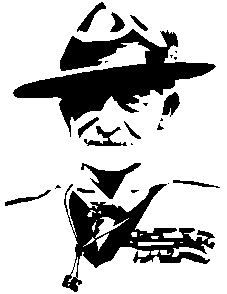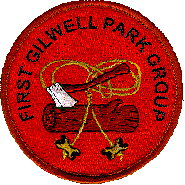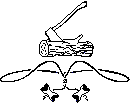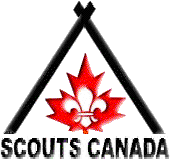
The late Lord Baden-Powell
It was not by chance that the Founder of Scouting ultimately became Baron Baden-Powell of Gilwell, and not by chance that when the late King George V expressed his desire to confer a title upon our founder, both he and the international committee whom he consulted separately decided that it could only be Lord Baden-Powell gilwell. All this happened back in 1929 at the time of the great World Jamboree at Arrow Park in England.
Of course the difficulty is that many people have jumped to the conclusion that Gilwell was B.-P.'s home. Well, spiritual home it may well have been, but physical home never; although he was a very frequent visitor, and in his later years, complete with his entire family based in his caravan, he was a familiar and loved figure at Gilwell reunions, but he never actually lived on the property.
It is worth recording here that he evolved Wood Badge training. In turth, the Founder created two significant things - Scouting itself, and then the method of training the adult leaders which would ensure its continuing success. He did it, in his own word "to make quite certain that when I am gone the future leaders of Scouting will really understand what it is all about and what my intentions have been".
It is not out of sentiment that we respect and honour the memory of the founder, but out of a continuing recognition of the soundness of what he gave to us.
 GILWELL AND SCOUTING
GILWELL AND SCOUTING
It has often been said that Scouting began with a man, an island and a book; it might be said that Gilwell began with two men and their dreams. As the Scout Movement emerged smilig, vigorous, from the dark days of the first world war, holding the future confidently in its hands, great schemes were forming in the imaginative mind of Robert Baden-Powell, and one above all: the need to add training to the enthusiasm of his Scoutmasters; good intentions were not enough. At the same time another man. Mr WF De Bois Maclaren, the district commissioner for Roseneath in Dunbartonshire, was concerned that the Scouts of the back streets of East London, whose love of the new game could be surpassed by none, has only the unlikely pavements and the inhospitable parks for their Scouting; what they needed was a camping ground which belonged to Scouts where they had a right to go when when they liked. It must not be too far out; he would would gind 10,000 pounds if B.-P. would find the place.
Undoubtedly more than one person came across Gilwell or knew about it - a derelict estate on the edge of Epping Forest, next door (one might say) to London's teeming east end, near Chingford, a village then with village ways and memories and not more than 4,000 people living there. the war just over, B.-P. and Gilwell cam face to face for the first time on the afternoon of November 22, 1918.
B.-P. persuaded Maclaren that their two dreams could be one: a training centre for Scouters could also be a camping ground for Scouts. And so it was. Maclaren bought Gilwell for 7,000 pounds and later gave 3,000 pounds to make the house habitable. On the 25th of July, 1919, Mrs. Maclaren cut the ribbon of Scout colours hung across the entrace, Mr. Maclaren proudly wore the Silver Wolf B.-P. awarded him. The Founder and Mrs. B.-P. had tea with the guests in the garden. A unique story, and history had begun.
 THE FIRST GILWELL PARK GROUP
THE FIRST GILWELL PARK GROUP
These notes would be incomplete if reference were not made to the 1st Gilwell Park group and its place in the world-wide brotherhood of Scouts; those many men and women who have passed through Wood Badge courses at Gilwell ans elsewhere in the Scouting world, have accepted the responsibility of setting an example to all other adult members of the movement.
The 1st Gilwell Park group is not, as is sometimes feared, a kind of superiority class, but there is a common bond between members who have shared and equally enjoyed an experience. It is important to realize that the scheme of Gilwell training in its broad outline, greatly as the details have changed, remains fundamentally as B.-P. laid it down when the first course were run; and it is this living together on a course, this learning to be self-reliant and self-sufficient that real bond of sympathetic understanding that exists between all wearers of the Wood Badge.

Of the badge itself it is sufficient to say that intrinsically it is valueless. Two pieces of wood hung on the end of a leather thong, but treasured by the aged, coveted by the young and worn with just pride by those in the middle years. It is a symbol of the universality of Gilwell and Gilwell training. The beads themselves and copies of those taken from a necklace which B.-P. captured from Chief Dinizulu during one of his many African campaigns.
The 1st Gilwell Park group members are proud to be members and, however far away them may be from their group headquarters, they recognize their responsibility, not just to Gilwell, but to the whole world of Scouting.
This, then, is the group and if you, reader are not yet a member, the only way to become one is to take the hard way, of completing your Wood Badge training and in that, as in all things, good luck, but the effort must
be yours.
|





 Until 1921 the scarf was simply knotted at the ends. About this time a scarf slide was used and, so far as is known, the name "woggle: was coined by Francis Gidney, Gilwell Park's first Camp Chief.
Until 1921 the scarf was simply knotted at the ends. About this time a scarf slide was used and, so far as is known, the name "woggle: was coined by Francis Gidney, Gilwell Park's first Camp Chief.

 On the point of the scarf is a small patch of the MacLaren tartan to recognize the gesture of Mr. W. deBois MacLaren who purchased and then donated the estate that was to become Gilwell Park. The material in the scarf is a registered cloth which means it cannot be modified or used for any other purpose.
On the point of the scarf is a small patch of the MacLaren tartan to recognize the gesture of Mr. W. deBois MacLaren who purchased and then donated the estate that was to become Gilwell Park. The material in the scarf is a registered cloth which means it cannot be modified or used for any other purpose.
